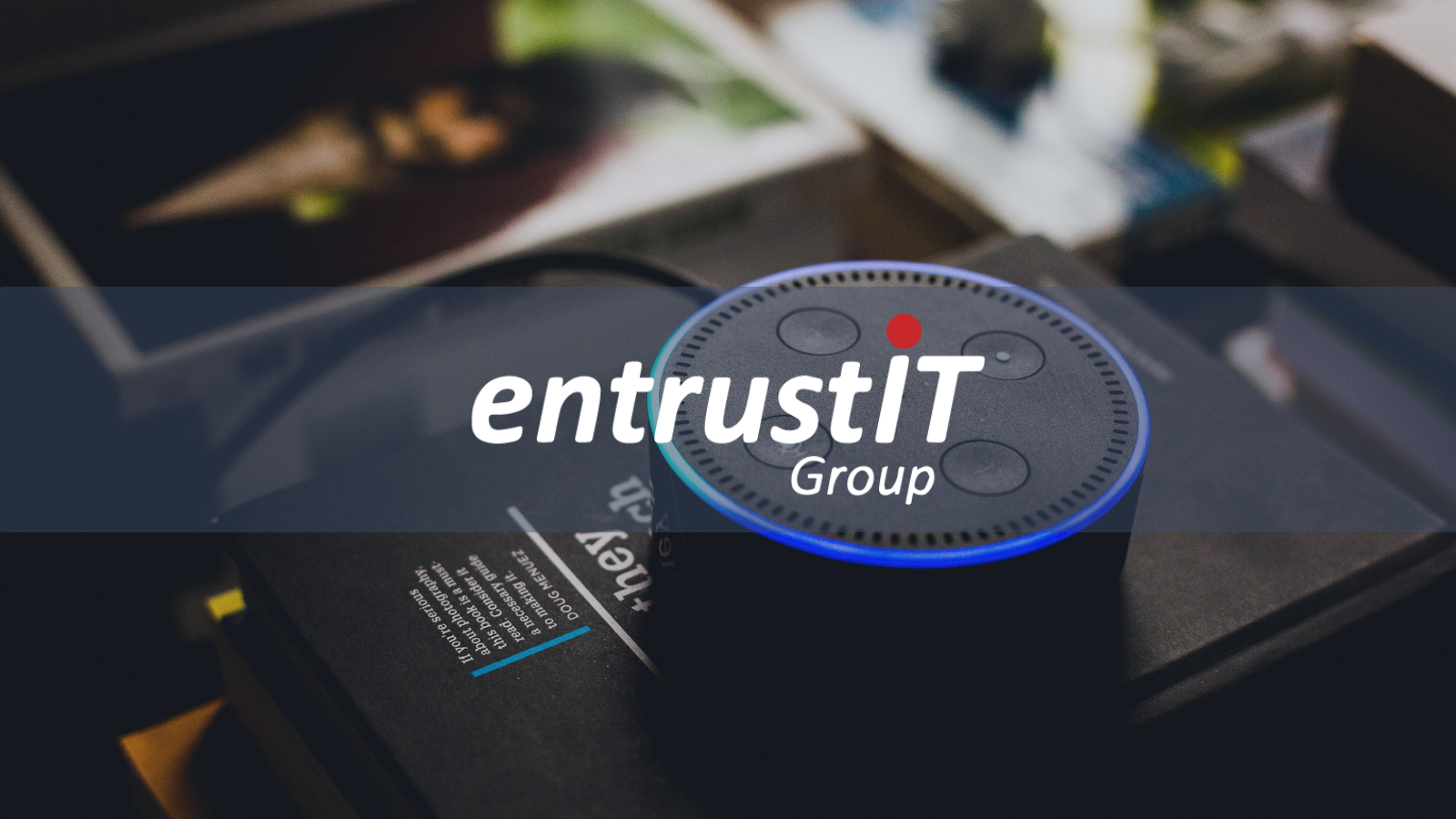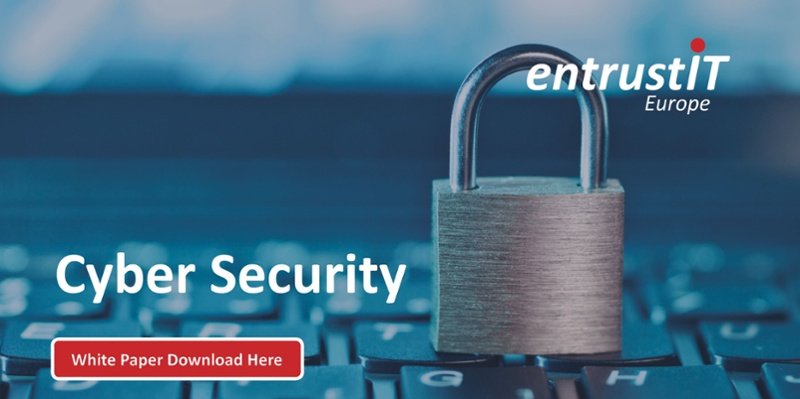
The Dark Truth of IoT: Internet of Things

A staggering statistic reveals by 2025 there will be over 75 billion connected IoT devices worldwide! The Internet of Things (IoT) has ushered in an era of unprecedented connectivity, where countless devices are seamlessly integrated into our lives. However, as this vast network expands, so does the dark side of this interconnected world. With each new device connected to the internet, the risks and challenges associated with IoT intensify. 
In this blog we'll delve into IoT's pressing concerns and potential pitfalls, emphasizing the critical need for robust cybersecurity measures to safeguard against looming threats.
What is IoT and Why's it Everywhere
IoT (Internet of Things) refers to the interconnected network of devices that seamlessly communicate with each other and the Internet. From smartphones and wearables to industrial machinery and smart home appliances, ITD devices have become an integral part of our everyday lives, enhancing convenience and efficiency.
Despite many people being unaware of their presence, IoT devices are constantly at work behind the scenes, collecting data, providing personalized experiences, and automating processes. In the realm of businesses, IoT's impact is even more pronounced. With numerous employees utilizing interconnected devices and a wide range of IoT devices deployed, understanding the significance of IoT becomes crucial for businesses to navigate the associated risks and ensure a secure and resilient infrastructure.
The Benefits of IoT
The Internet of Things (IoT) has become an integral part of our modern society, and its benefits are undeniable. The interconnectedness of devices, systems, and services through IoT brings forth a multitude of advantages that have made it an unavoidable phenomenon in today's age. Here are some key benefits of IoT and why its presence is deeply embedded in our daily lives.
-
Enhanced Efficiency and Productivity: IoT enables seamless connectivity and data exchange between devices, allowing for automation and optimization of various processes. From smart homes that adjust lighting and temperature based on preferences to industrial IoT applications that streamline production and supply chains, IoT drives efficiency and productivity by reducing manual intervention and enhancing overall system performance.
-
Improved Quality of Life: IoT devices have revolutionized the way we live, offering convenience, comfort, and personalized experiences. Connected wearables, smart healthcare devices, and home automation systems enhance our well-being, monitor our health, and simplify daily tasks. Whether it's tracking fitness goals, managing energy consumption, or accessing information with voice-activated assistants, IoT has transformed our lives for the better.
-
Enhanced Decision-Making and Insights: The vast amount of data generated by IoT devices provide valuable insights that can be leveraged for informed decision-making. Businesses can utilize real-time data analytics to optimize operations, identify trends, and enhance customer experiences. From predictive maintenance in industrial settings to targeted marketing campaigns based on consumer behaviour, IoT data empowers organizations to make data-driven, strategic choices.
-
Cost Savings and Sustainability: IoT-driven automation and optimization lead to cost savings and resource efficiency. Connected systems can monitor energy usage, optimize resource allocation, and identify areas for improvement, resulting in reduced operational costs and environmental impact. Smart grids, intelligent transportation systems, and waste management solutions are just a few examples of how IoT contributes to sustainability and cost-effectiveness.
-
Safety and Security Enhancements: IoT applications have the potential to enhance safety and security across various domains. Connected surveillance systems, smart cities, and advanced driver assistance systems improve public safety. In industries such as manufacturing and healthcare, IoT enables real-time monitoring of equipment, ensuring safe operations and prompt detection of anomalies. Moreover, IoT can contribute to the early detection and response to potential security threats.

More 'Things' to Attack Than Ever
The intricate web of interconnected IoT devices has exponentially increased the attack surface for cybercriminals. With billions of devices connected to the internet, each with its potential vulnerabilities, hackers are presented with an abundance of entry points. Inadequate authentication mechanisms, weak encryption protocols, and vulnerable communication channels render IoT devices enticing targets for cyber attacks. From the compromise of home surveillance systems to the disruption of critical infrastructure, the ramifications can span from personal privacy invasion to widespread economic turmoil.
The Dark Side of IoT
Navigating the Risks and Challenges. While the Internet of Things (IoT) brings numerous benefits, it also poses significant risks that demand our attention. In this section, we explore the potential pitfalls and vulnerabilities associated with IoT and provide insights on how to mitigate them.
Botnets and Distributed Denial of Service Attacks
One of the most alarming threats arising from the dark side of IoT is the emergence of botnets. These networks of compromised devices, under the control of malicious actors, pose a significant hazard. By leveraging a multitude of compromised IoT devices, cybercriminals can orchestrate devastating Distributed Denial of Service (DDoS) attacks. Such assaults overwhelm targeted systems with a deluge of traffic, causing widespread disruption and substantial financial losses.
Data Breaches and Privacy Concerns
IoT devices generate vast volumes of data, often of a sensitive nature. From personal health information captured by wearables to smart home devices recording audio and video, the potential for data breaches and privacy violations is alarmingly high. Inadequate security measures and lax data handling practices expose this sensitive information to unauthorized access. The implications extend from identity theft to severe reputational damage for individuals and organizations alike.
Inadequate Security Practices
A significant challenge contributing to the dark side of IoT is the prevalent use of insecure devices. Frequently, manufacturers prioritize functionality and speedy market entry at the expense of robust security measures. Consequently, many IoT devices lack fundamental security features, rendering them easy prey for attackers. Outdated firmware, default credentials, and unpatched vulnerabilities are prevalent security flaws found in IoT devices. Furthermore, the absence of industry-wide security standards compounds the problem, leaving consumers and organizations susceptible to cyber threats.
Mitigating the Risks: Best Practices for IoT Security
To navigate the dark side of IoT, implementing robust security measures is imperative. Organizations and individuals can adopt proactive steps to safeguard their IoT ecosystem. These include:
- Implementing Strong Authentication and Access Controls: Employing multi-factor authentication and stringent access controls to thwart unauthorized access to IoT devices and systems.
- Emphasizing Encryption and Secure Communication: Utilizing robust encryption protocols to protect data transmission between devices and back-end systems.
- Regular Updates and Patching: Ensuring IoT devices are promptly updated with the latest firmware and security patches to address known vulnerabilities.
- Employing Network Segmentation: Isolating IoT devices from critical systems through network segmentation, thereby limiting the potential impact of a compromise.
- Continuous Monitoring and Incident Response: Deploying robust security monitoring tools to detect suspicious activities and establishing a comprehensive incident response plan to swiftly address
Learn more about how you can secure your business by utilizing the revolutionary power of AI and automation HERE
Unavoidable but Addressable
In conclusion, the Internet of Devices (IoD) presents both opportunities and challenges in our interconnected world. While there are inherent risks associated with IoD, it has become an indispensable part of our personal lives and is a critical enabler of innovation and efficiency in business environments. Acknowledging the risks is the first step toward building a resilient IoD ecosystem. Businesses must prioritize implementing robust security measures, such as strong authentication, access controls, regular updates, and ongoing monitoring. Additionally, fostering a culture of cybersecurity awareness and establishing comprehensive incident response plans are vital.
It is essential to recognize that complete avoidance of IoD is impractical in today's age, but by taking the right steps toward mitigating the risks, businesses can harness the power of IoD while safeguarding their operations, sensitive data, and reputation. By embracing a proactive and comprehensive approach to IoD security, businesses can navigate the challenges and reap the benefits of this transformative technology.
Subscribe here!
Recent Posts
Posts by tag
- technology (128)
- Security (111)
- IT Security (98)
- cyber security (98)
- modern technology (70)
- Managed Service (69)
- Microsoft 365 (68)
- Cloud (66)
- IT support (66)
- business (63)
- cloud computing (60)
- cyber attack (60)
- cloud it (56)
- cybersecurity (56)
- microsoft (55)
- workplace (55)
- Microsoft Teams (53)
- Working from home (51)
- productivity (49)
- IT (47)
- office (46)
- office 365 (45)
- Password Security (43)
- entrustit (41)
- employees (39)
- Uncategorised (38)
- flexible work (37)
- Cyber (35)
- Remote (33)
- efficiency (31)
- Hosted Workspace (30)
- hosted desktop (30)
- it support bournemouth (30)
- schools (29)
- cyber privacy (28)
- email security (28)
- independent schools (28)
- it support dorset (27)
- school ict (27)
- collaboration (26)
- 2023 (25)
- computing (25)
- it support hampshire (25)
- public cloud (24)
- it consultancy (22)
- IT audit (20)
- entrust (20)
- it consultancy bournemouth (20)
- it support southampton (20)
- password (20)
- it consultancy dorset (19)
- it consultancy hampshire (19)
- msp (19)
- passwords (19)
- ransomware (19)
- hosted applications (18)
- it support winchester (18)
- VoIP (17)
- cloud cctv (17)
- cloud voip (17)
- covid19 (17)
- hacking (17)
- it consultancy southampton (17)
- private cloud (17)
- data (16)
- teamwork (16)
- Coronavirus (15)
- IT costs (15)
- cctv (15)
- office 365 support (15)
- GDPR (14)
- hackers (14)
- internet (14)
- network (14)
- Protection (13)
- covid-19 (13)
- hack (13)
- internet safety (13)
- management (13)
- Hosted Desktop and Applications (12)
- Windows Virtual Desktop (12)
- hardware (12)
- hybrid cloud (12)
- windows 10 (12)
- 2020 (11)
- 2022 (11)
- Microsoft Planner (11)
- artificial intelligence (11)
- awards (11)
- data breach (11)
- phishing (11)
- vulnerabilities (11)
- AI (10)
- Hampshire (10)
- IT Director (10)
- digital (10)
- uk (10)
- windows (10)
- Backup (9)
- attack (9)
- bitwarden (9)
- planning (9)
- software (9)
- telephony (9)
- usecure (9)
- communication (8)
- desk phone (8)
- education (8)
- eu (8)
- outsource (8)
- partnership (8)
- staff (8)
- Bournemouth (7)
- Dorset (7)
- Google (7)
- OneDrive (7)
- award winning (7)
- cloud storage (7)
- infrastructure (7)
- mobile (7)
- offsite backup (7)
- 2019 (6)
- AI CCTV (6)
- Access Management (6)
- Apple (6)
- ISO (6)
- News (6)
- Skype for Business (6)
- apps (6)
- architect (6)
- child protection (6)
- european union (6)
- hacks (6)
- internet of things (6)
- iot (6)
- legal (6)
- legal it (6)
- mobile phones (6)
- onsite backup (6)
- password manager (6)
- remote desktop service (6)
- resources (6)
- virus (6)
- 3d design desktop (5)
- Azure (5)
- Case Studies (5)
- Cyber Essentials (5)
- Cyber Essentials Plus (5)
- Desktop (5)
- Microsoft Copilot (5)
- Multi-Site Business (5)
- Risk assessment (5)
- Thames Valley Tech & Innovation Awards (5)
- The Business Magazine (5)
- Windows 7 (5)
- award (5)
- brexit (5)
- designer (5)
- ios (5)
- personal data (5)
- smartphone (5)
- sophos (5)
- surrey (5)
- united kingdom (5)
- website (5)
- Attacks (4)
- BYOD (4)
- ChatGPT (4)
- DR (4)
- DR planning (4)
- Facebook (4)
- Government (4)
- IP (4)
- MDR (4)
- Microsoft Forms (4)
- SharePoint (4)
- VPN (4)
- WannaCry (4)
- computer performance (4)
- ddos (4)
- digital transformation (4)
- disaster recovery (4)
- law (4)
- legacy (4)
- modern work (4)
- proactive (4)
- remote learning (4)
- sme (4)
- wireless internet bournemouth (4)
- wireless internet southampton (4)
- 2021 (3)
- 2024 (3)
- 5G (3)
- Dorset Chamber (3)
- EDR (3)
- Fourth Industrial Revolution (3)
- General (3)
- Google Drive (3)
- Hampshire Chamber (3)
- Help (3)
- High Growth (3)
- Local (3)
- NHS (3)
- New Forest (3)
- South Coast Tech & Innovation Awards (3)
- Tech Company of the Year (3)
- Tech Growth (3)
- Thames Valley (3)
- Tiva (3)
- Zoom (3)
- acquisition (3)
- big switch off (3)
- budgets (3)
- citrix (3)
- closed cloud (3)
- copilot (3)
- copilot pro (3)
- digital hub (3)
- guide (3)
- innovation (3)
- instagram (3)
- intelligence (3)
- london (3)
- meetings (3)
- online meetings (3)
- smart buildings (3)
- storage (3)
- strategy (3)
- teaching (3)
- trump (3)
- twitter (3)
- windows 11 (3)
- 2016 (2)
- 2018 (2)
- BGL Company (2)
- Bourne Group (2)
- Burhill (2)
- Burhill Group (2)
- CAD (2)
- Environment (2)
- Firewall (2)
- GPT-4 (2)
- Gen Z (2)
- Hampshire Business Awards (2)
- ISBA (2)
- Macs (2)
- Managed Service Provider of the Year (2)
- Microsoft Autopilot (2)
- Mr Mulligans (2)
- PaaS (2)
- Privacy Shield (2)
- Sydenhams (2)
- Wifi (2)
- XDR (2)
- afc bournemouth (2)
- afcb (2)
- android (2)
- b2b (2)
- bcs (2)
- berkshire (2)
- blockchain (2)
- broadband (2)
- camcloud (2)
- cryptocurrency (2)
- dark web (2)
- downtime (2)
- dropbox (2)
- eagle eye networks (2)
- east grinstead (2)
- exhibition (2)
- farnham (2)
- finalist (2)
- legalex (2)
- machine learning (2)
- macos (2)
- organisation (2)
- paypal (2)
- predictions (2)
- president (2)
- reading (2)
- serval systems (2)
- smart sensors (2)
- solent (2)
- us (2)
- utility management (2)
- video conferencing tools (2)
- zero-trust (2)
- 1998 (1)
- 2026 (1)
- AMD (1)
- ARM (1)
- Abbey Hill (1)
- Aldwickbury Park (1)
- BBC (1)
- BUNKERS! (1)
- Bedford (1)
- Bedfordshire (1)
- Birchwood Park (1)
- Burnout (1)
- CEO (1)
- Central South Business Awards (1)
- Cloud VMS (1)
- Cloudtango (1)
- East Midlands (1)
- Endpoint 100 (1)
- Go Integrator (1)
- Growth 100 (1)
- Harvey Jones Kitchens (1)
- Hoebridge (1)
- Hospitality (1)
- Ignite 2018 (1)
- Ignite 2020 (1)
- Insider (1)
- Intune (1)
- LLM (1)
- Leaders (1)
- Loop (1)
- M&A (1)
- MFA (1)
- MPLS (1)
- MSP Select 2024 (1)
- Market (1)
- May (1)
- Multi Factor Authentication (1)
- MyAnalytics (1)
- Ninja Warrior UK (1)
- PBX (1)
- PM (1)
- Power BI (1)
- Ramsdale Park (1)
- Redbourn (1)
- Regulation (1)
- Reid Steel (1)
- SD-WAN (1)
- Surrey Business Awards (1)
- Thornbury (1)
- WCry (1)
- WannaCrypt (1)
- Wycombe Heights (1)
- ashley madison (1)
- bandwidth (1)
- battersea (1)
- beach (1)
- big data (1)
- black friday (1)
- bloatware (1)
- brand (1)
- builders merchant (1)
- business growth (1)
- business process audit (1)
- cambridge analytica (1)
- canada (1)
- cia (1)
- clinton (1)
- cnn (1)
- co op (1)
- compliance (1)
- connectivity (1)
- copyright (1)
- crime (1)
- cyber monday (1)
- dean drako (1)
- defence (1)
- dkim (1)
- dmarc (1)
- dns (1)
- donald (1)
- dyn (1)
- election (1)
- enterprise (1)
- epos (1)
- equality (1)
- executive order (1)
- facial recognition (1)
- fax (1)
- football (1)
- gchq (1)
- grinstead (1)
- intel (1)
- intercept x (1)
- josh widdicombe (1)
- knights of old (1)
- landmarks (1)
- learning (1)
- legal technology forum (1)
- leisure (1)
- meltdown (1)
- millennials (1)
- mimecast (1)
- mirai (1)
- no-deal (1)
- number plate detection (1)
- onsite (1)
- outsourcing (1)
- paper (1)
- patisserie valerie (1)
- performance reviews (1)
- pound (1)
- premier league (1)
- private equity (1)
- procrastination (1)
- recruitment (1)
- research (1)
- retail (1)
- roundtable (1)
- samsic (1)
- sharefile (1)
- smishing (1)
- snowden (1)
- solent business awards (1)
- solentBA (1)
- spectre (1)
- spf (1)
- sterling (1)
- storm (1)
- talktalk (1)
- trumppresident (1)
- ukitawards (1)
- united states (1)
- usa (1)
- vault 7 (1)
- vitality stadium (1)
- whatsapp (1)
- white (1)
- white house (1)
- wikileaks (1)
- women in business (1)
- xiongmai (1)
- year (1)
- zero touch deployment (1)
